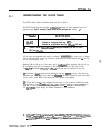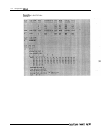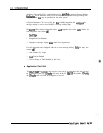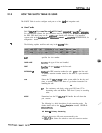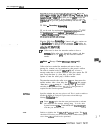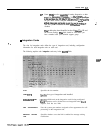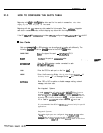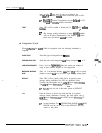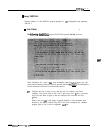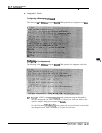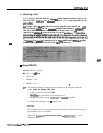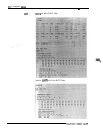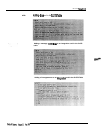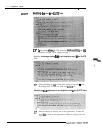
21.3
HOW TO CONFIGURE THE SLOTS TABLE
Beginning with
slot
Al, amfigure the slots used for line cards in consecutive
order, without
skipping any slots within the group
of line cards.
Beginning with slot A9, reserve any slots needed for future cards. Then, amfigure integration
card slots in consecutive order, without skipping any slots within the integration cards.
If the VP 3OOsM’ 300
ax@uraUon
includes
VF%&,
configure the
VI%&
At2
card in slot Al2
m
tine Cards
Each port
co~ected
to a PBX extension can be configured to handle calls differently. The
following descr&es the valid or
invalid
entries for the SLOTS
T&ble
fields.
CARD TYPE
Enter the type of line card
-
LIC4, DAC4. TLC4
PORT
Cmfiie
the ports in consecutive order.
MiENSiON
#
Enter the PBX extension number connected to each
vP3tKkNP3oopo~.
cos
Enter the COS for each port on the line card
MODE
Enter the Answering Mode.
Must be either Primary Answer
-
AX,
Secondary Answer
-
CX,
or Message Center
-
MX.
OUTCALL
Enter YES or NO to enable or disable message waiting, network
message, and alarm calls.
Non-integrated Systems:
In most cases, allow all ports to make
out&
When all ports are
defined as YES, the
VP
3OOsWP
300
only makes
outcalls
when no
more than
%
of the ports are in use.
This
leaves ports available for
incoming calls. If NO is defined for any
porn
all ports defmed as
YES are
used for outcalls, even when more than
%
are in use.
It is recommended that NO for
OUTCALL
be used only for special
applications.
Integrated Systems:
If
less
than eight ports are configured, the
\P
3OOsAT
3CKl
makes
outcalls
when at least two ports are idle. Lf
5
fo
32 ports are
configured, the VP
3OOsAT
300 makes
outzllls
when at least three



